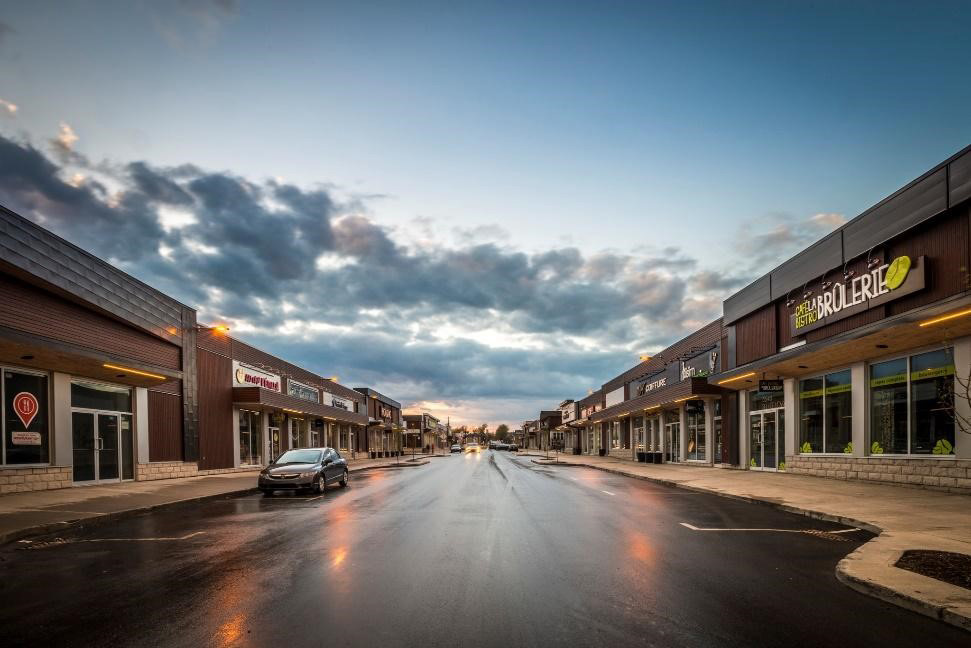Statistics Canada has released its eighth report on the performance of the Community Futures Program (CFP), which is delivered by SADC et CAE in Quebec. It confirms the findings of previous studies that businesses who work with SADC et CAE in Quebec have better survival rates, create over twice as many jobs, and more rapidly increase their payroll and sales. Notably, there was a seven-percentage-point increase this year in the five-year survival rate of businesses. The rate was 87% for our clients, compared to 53% for businesses in the control group.
Author: sadcstaging
THE CAE RIVE-NORD SECURES FUNDING TO REVITALIZE THE RCM OF ARGENTEUIL TERRITORY
ARGENTEUIL (Quebec), October 11, 2018 – The CAE Rive-Nord and the Réseau des SADC et CAE are pleased to announce the addition of new funding to support the revitalization of the RCM of Argenteuil’s territory. The CAE will use this funding of at least $140,000 from the Canada Economic Development for Quebec Regions (CED) for a pilot project to open a point of service in Lachute and to hire a professional to serve as a resource person for the territory.
Continue reading “THE CAE RIVE-NORD SECURES FUNDING TO REVITALIZE THE RCM OF ARGENTEUIL TERRITORY”
LAC-MEGANTIC…FIVE YEARS LATER

SPECIAL INTERVIEW: LAC-MÉGANTIC…FIVE YEARS LATER
INTERVIEW WITH GINETTE ISABEL, EXECUTIVE DIRECTOR OF SADC DE LA RÉGION DE MÉGANTIC
On July 6, 2013, an unprecedented train wreck rocked the town of Lac-Mégantic. A massive explosion and fire destroyed the downtown, killing 47 people, more than half of them under the age of 40. The Lac-Mégantic region was a model for the coordination of economic development stakeholders, with one of the most beautiful and vibrant downtowns in Quebec.
Réseau – Ginette, the SADC played a major role in the aftermath of the disaster. Looking back, what were the most difficult moments?
G.I. – After making sure that my family, board members and team members were all still alive, the most difficult thing was how totally disorganized everything was. The SADC had lost everything and didn’t have the tools to help people. The feeling of powerlessness was overwhelming, and we at the SADC quickly got to work in order to reassure those most affected by showing them a semblance of normalcy.
Réseau – Your region was famous for how well-coordinated stakeholders were. How is it now?
G.I. – In the first few months, all the organizations instinctively formed a united front. We got together every morning to coordinate our actions and share tasks. This is what helped us get through it all. After Mayor Laroche left, the municipal council changed. There wasn’t enough time to consult the organizations, and they made some controversial decisions. During this time, the organizations felt the need to stand out again and act more individually. This was a difficult time. It became clear that collaboration had broken down. There’s more of it now, however. People want to feel that unity again.
Réseau – After five years, what are the most significant consequences?
G.I. – How people are still feeling vulnerable, which makes them insecure and afraid of investing and getting involved. Then there’s the loss of our downtown, which we prided ourselves on. Two weeks before the tragedy, I had reviewed our facade renovation program and was happy to say that there were only three buildings left to redo… None of the downtown buildings withstood it. Both residents and tourists say that we have lost our soul. They are disappointed that the new buildings don’t have the same charm. I wouldn’t have believed it could affect us so much.
Réseau – Were there any positives in all these events?
G.I. – Of course! Definitely the most significant is how many of Lac-Mégantic’s young people have returned. They felt the sense of urgency and wanted to help. As well, the media coverage in the first few months helped us raise several million dollars to aid the victims. And I want to acknowledge Canada Economic Development (CED), which has provided exceptional financial assistance and technical support. The $5 million in recovery funds for Lac-Mégantic enabled us to help businesses relocate, and there will soon be new buildings on Frontenac Street thanks to this funding.
Réseau – How is the region’s economy doing these days ?
G.I. –The commercial sector is still struggling, as it was the most affected, but the industrial sector is doing well. CED also supported them. Although it was previously thought that everything would be done in three years, it will take at least ten years to rebuild Lac-Mégantic.
Réseau – Ginette, you are going to be leaving the SADC in a few months. What gives you hope and pride with regard to these events?
G.I. –The removal of the railway will be a fantastic opportunity to redevelop the town centre so that it regains some of its charm. My greatest sources of pride are having really made a difference for the victims and a sense of accomplishment.

Papineau Street, Photo credit: Claude Grenier
NEW FINANCIAL CONTRIBUTION TO SUPPORT FEMALE AND INDIGENOUS ENTREPRENEURS
NEW FINANCIAL CONTRIBUTION TO SUPPORT FEMALE AND INDIGENOUS ENTREPRENEURS
Continue reading “NEW FINANCIAL CONTRIBUTION TO SUPPORT FEMALE AND INDIGENOUS ENTREPRENEURS”